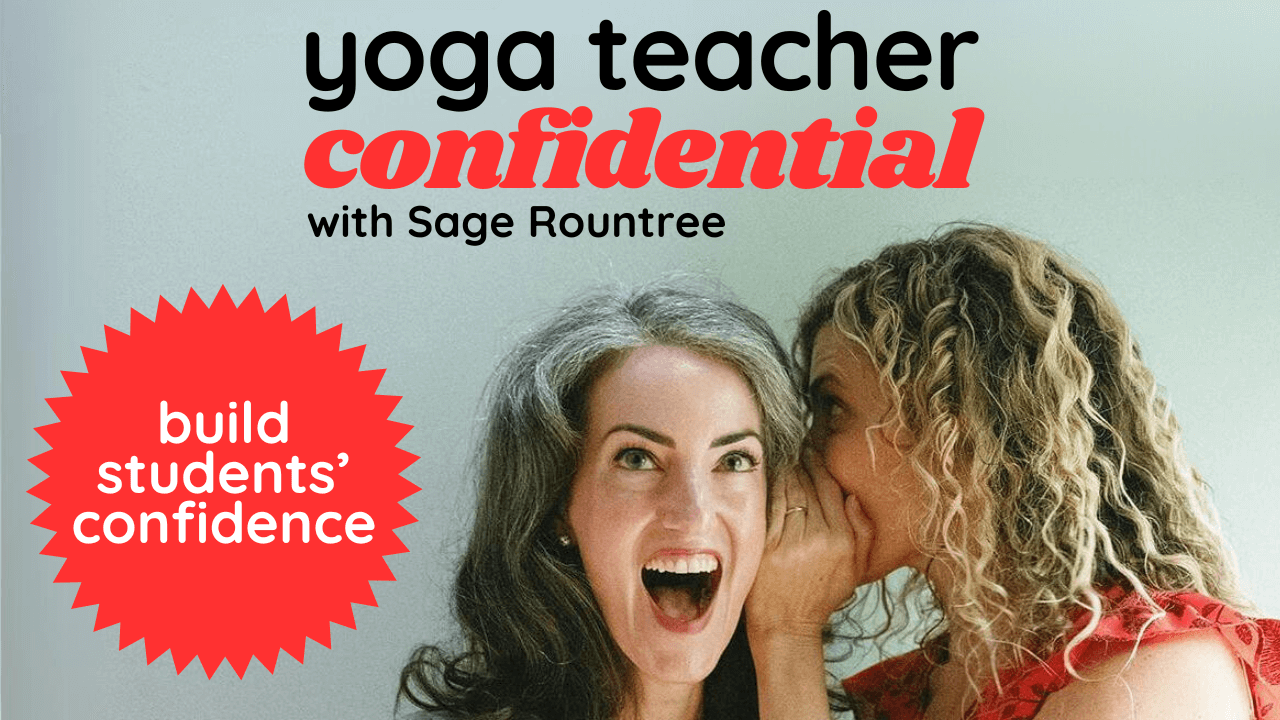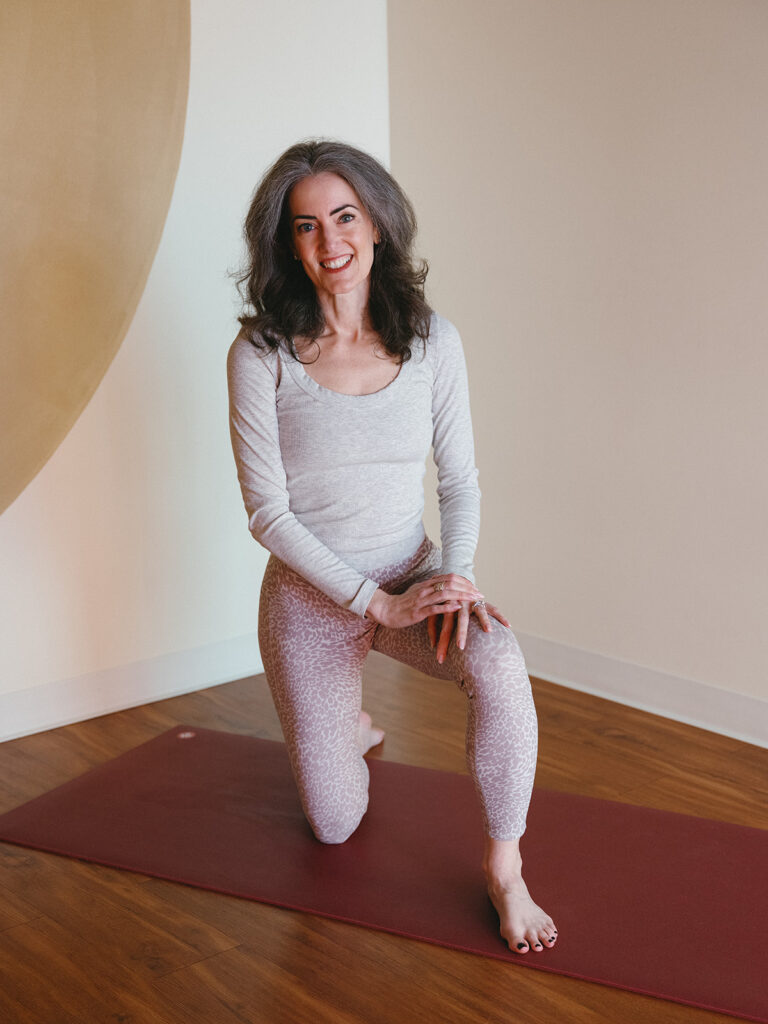Have you ever walked into a yoga class and felt completely lost? Not because the poses were too hard, but because you just didn’t know what was happening? I have.
My first yoga class was a disaster.
I was at the gym, looking in through the studio windows from the stair climber, thinking, That looks easy enough. I should try it. So I did. But within ten minutes of stepping onto the mat, I was drowning in uncertainty. The teacher was using Sanskrit pose names I didn’t understand, he wasn’t giving any context for how long we’d hold things, and he spent most of the class walking around adjusting people instead of explaining what was coming next.
And at the end, we were all just lying there.
I desperately needed to use the bathroom, but I had no idea if I could leave or if that would be rude. Would everyone stare at me? Was I supposed to stay still? The teacher never addressed it, so I just lay there, tense and uncomfortable.
The thing is, the poses weren’t the problem—it was the uncertainty that made the whole experience so overwhelming.
Fast-forward to today, and I see the same dynamic play out all the time. Students aren’t just wondering if they can physically do the poses. They’re wondering:
- Where’s the bathroom?
- How long are we holding this?
- Can I leave if I need to?
- Is it okay to rest?
- What if I fall?
When students have to spend mental energy on these anxieties, they can’t fully engage in the practice. And that’s where we, as teachers, can make all the difference.
We do that by providing two essential things:
1. Consistency in class structure so students know what to expect.
2. Clear permission so they don’t have to guess what’s allowed.
These two elements create an environment where students feel safe to explore, grow, and actually enjoy their practice.
Step 1: Build a Consistent Class Structure
One of the most effective ways to help students feel comfortable is to create a predictable rhythm in your classes.
Now, this doesn’t mean teaching the exact same sequence every time (unless that’s your style). But it does mean giving students a framework they can count on—a beginning, a middle, and an end that feels familiar, even when the details change.
Here’s how I do it in my own classes:
1️⃣ Start with a reliable opening ritual.
This could be three deep breaths, a specific centering practice, or a short sequence of movements. The key is consistency—when students hear that familiar cue, they know class has begun.
2️⃣ Use a clear sequencing structure.
I follow a 6-4-2 sequencing framework, meaning:
• We always move through the six moves of the spine (forward bend, backbend, side bends, twists).
• We target the four lines of the leg (front, back, inner, outer).
• We engage the two core actions (stabilization and articulation).
It’s not about repeating the same class—it’s about maintaining a recognizable pattern so students don’t feel like they’re constantly trying to catch up.
3️⃣ Close with a familiar ending.
Just like a solid opening, a reliable closing sequence helps students feel grounded. Whether it’s a particular breathwork practice, a seated posture, or a certain way of transitioning into final relaxation, a predictable ending signals completion and closure.
Think about it like a well-structured story: the beginning draws them in, the middle builds engagement, and the end provides resolution.
Step 2: Give Explicit Permission for Choices and Convey Logistics
The other major factor in student comfort? Not making them guess what’s OK.
Many students hold back in class—not because they can’t do something, but because they don’t know if they should.
As teachers, we need to make it crystal clear what their options are, not just in poses, but in navigating the entire classroom experience.
Some ways to do this:
✅ At the start of class, address the basics.
Say something like: “The bathroom is through that door. You’re welcome to use it anytime—no need to ask.” This eliminates that hesitation students feel about whether they’re allowed to take care of their needs.
✅ Normalize modifications as equal options.
Instead of saying, “If you can’t do this, modify like this,” try: “You might choose this version, or you might prefer this one today.” The language we use matters—students shouldn’t feel like one option is a “failure” or a “lesser” choice.
✅ Teach students how to exit a pose.
This is so important, especially in balance poses. Students often don’t know what to do when they start wobbling—so show them! In Tree Pose, for example, I demonstrate stepping my foot down smoothly instead of flailing. I want them to see that falling isn’t a mistake—it’s just part of the process. I consider teaching students how NOT to be in the pose even more important than how to be in it.
✅ Reinforce permission throughout class.
Before a tough sequence: “Remember, Child’s Pose is always there for you.”
Before a long hold: “You can come out early if you need—listen to your body.”
Before a challenge: “Wobbling in balance poses is totally normal. That’s why we call it a practice, not a performance.”
The more we repeat these permissions, the more students will actually believe them.
Why This Matters
Ultimately, yoga is about freedom—freedom in the body, freedom in the breath, freedom in the mind.
But paradoxically, freedom only happens when there’s a safe structure in place.
Students need to trust the framework of your class so they can focus on their experience instead of worrying about logistics. They need to know they have permission to make choices so they can actually listen to their bodies instead of second-guessing themselves.
When you provide consistency and permission, you’re not just leading a class—you’re creating an environment where students feel empowered. And that’s when true transformation happens.
Try This in Your Next Class
Take a moment to reflect on your teaching:
- Do your students know what to expect in your class structure?
- Do you explicitly tell them their options, both in poses and in navigating the space?
- Do you repeat permissions enough that they really believe they have choice?
Choose one area to refine. Maybe it’s your opening ritual, the way you cue modifications, or how you communicate classroom logistics. Implement it in your next class, and observe how it changes the energy in the room.
I’d love to hear how this works for you! Come join The Zone, my free yoga teacher community at comfortzoneyoga.com, and let’s chat.
For now, I encourage you to teach with clarity, structure, and permission—and watch your students’ confidence grow.


